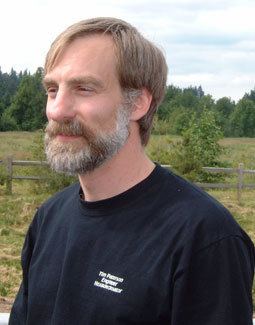Name Tim Patterson Role Computer programmer | ||
 | ||
Education University of Washington | ||
Computer programmer | Tim Paterson-Brown | Released over 120 articles
R. Timothy Patterson Ph.D. is a professor of geology in the Department of Earth Sciences at Carleton University, Ottawa, Ontario, Canada. He is a Canadian researcher with specialization in paleolimnology, paleoceanography and paleoclimatology. He founded and is co-Director of the Carleton Climate and Environmental Research Group (CCERG) He has previously served as Director of the Ottawa-Carleton Geoscience Centre and as Senior Visiting Fellow in the School of Geography, Queen's University of Belfast, Northern Ireland.
Contents
- Computer programmer Tim Paterson Brown Released over 120 articles
- Computer programmer Tim Paterson Brown Canadian leader of UNESCO
- Research
- Select publications
- Academic group memberships
- References
Computer programmer | Tim Paterson-Brown | Canadian leader of UNESCO
Research
Patterson has made more than 300 scholarly contributions, including over 180 peer-reviewed journal publications and book chapters. Patterson is also an international lecturer and media commentator, primarily contributing to increasing public awareness of environmental issues. He co-founded and served as Executive Editor (1997-2000) of Palaeontologia Electronica (PE). Palaeontologia Electronica covers all aspects of palaeontology, and is the world's longest running open-access, peer-reviewed electronic journal. He also previously served as Associate Editor for the Journal of Foraminiferal Research (1995-2008), and the journal Micropaleontology (1990-1997).
Patterson works on a wide array of research subjects, most of which are based on analysis of marine and lake sediments to reconstruct past environments. He uses many techniques to understand the history of marine and lake environments from the perspective of: 1) the influence of climate variability on aquatic ecosystem services (AES); 2) the impact of degradation resulting from human activities on AES, and 3) the degree to which remediation and mitigation efforts are successful in improving AES. He has developed technologies that permit extraction of very high-resolution paleoenvironmental records, and uses time series analysis techniques to recognize trends and cycles in the climate record. Other research focuses on assessing the impact of nutrient loading and road salt contamination on lake environments. He is also engaged in research on tracking the influence of climate change on metal transport in northern lakes and has partnered with indigenous peoples of the Northwest Territories to develop research tools to calibrate western scientific reconstructions of past climate against the oral histories that are provided by First Nations communities.
In June 2007 he authored a general interest article in the Financial Post (the business section of the National Post, a major Canadian newspaper) predicting general climatic cooling as the sun enters Solar cycle 25 about 2018. He based his prediction on the close correlation between solar and climate cycles in his high resolution analysis of late Holocene cores deposited under anoxic conditions within deep Western Canadian fjords. Solar cycle 25 will be as weak as solar cycles in the early 19th century during a very cold phase of the Little Ice Age. At this time drought and short growing seasons would have made present day agricultural practices used in areas like the grain growing region of western Canada impossible. In a November 2015 address to the Canadian International Council (CIC) "Climate Change: Ottawa, and the Provinces are Going to Paris" he stated that in addition to concerns over the long-term impact of global warming it would be prudent for Canadian policy makers and planners to be made aware that "climatic cooling associated with Solar Cycle 25 and a corresponding trough in the Gleissberg Cycle may negatively impact the Canadian agricultural sector. During any climatic warming agricultural methods used to the south can be immediately adapted. However, cooling such as may occur beginning about 2018 would be an agricultural and national disaster as no one is farming north of us."
A similar approach based on generic geochemical data and astrophysical deliberations was published by Jan Veizer and Nir J. Shaviv in GSA Today, describing a reduced (capped) influence of carbon dioxide to Climate Change and attributing a more significant influence to cosmic rays. While the mechanism seems not yet to be fully understood, the empirical data showed a suitable fit. The results, not the thesis are in line with the minimal level of the consented temperature predictions of the IPCC.
